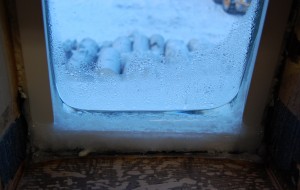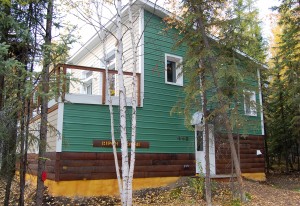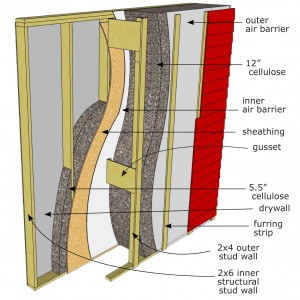While it might seem like summer is far away, the building season is right around the corner, and now is a good time to finalize any plans for upcoming home improvements. If you’re interested in reducing your home’s energy use, there are several opportunities this spring to learn about energy efficient building and retrofit techniques.
The building addition at CCHRC, which opened last year, features passive solar design, radiant floors, a pellet boiler and a super-insulated building envelope. There are efficient technologies in the original building as well, including a masonry heater, ground source heat pump, a sewage treatment plant, solar photovoltaic panels and thermal storage. Tours are offered at 2 p.m. on the second Thursday of every month and feature both the original building and the addition, and include plenty of time for questions and discussion, as well. Spring 2014 tours will take place Feb. 13, March 13, April 10 and May 8. In addition, the Builders Resource Library at CCHRC contains information on many aspects of cold climate construction and heating systems. The library is open Monday-Friday, and a catalogue is available online atcatalog.library.uaf.edu (select CCHRC from the Library menu).
Golden Valley Electric Association offers one-on-one instruction through its Home$ense audit program. Through the $40 program, an energy auditor visits your home to discuss ways to reduce your electrical usage and energy costs. To sign up, call the member services department at GVEA at 458-4555 or visit www.gvea.com.
Classes on more advanced topics are offered by the Alaska Craftsman Home Program (ACHP). Advanced Cold Climate Construction will be held Feb. 12 and 13 in Fairbanks, covering the latest energy efficient construction methods on topics such as insulation, vapor retarders, windows and ventilation. The class includes a construction manual and certificate for continuing education credits. Also, ACHP will
offer a one-day class on the Building Energy Efficiency Standard (BEES) on March 19 and May 22. This class covers the BEES requirements for insulation values, air leakage, moisture protection and ventilation. Fees and registration for these classes and more information can be found at www.achpalaska.com.
For those interested in wood heating, UAF is hosting the Firewood Workshop from 10 a.m. to 2 p.m. Saturday in the Bunnell Building. The workshop covers how-to tips for cutting and drying wood, operating a wood stove and more.
Finally, the annual Interior Alaska Building Association Home Show will take place March 28-30 at the Carlson Center and will feature topics including financing, remodels and new construction. There also will be seminars and demonstrations on a variety of topics related to homebuilding. The home show kicks off the summer building season in Fairbanks and is an excellent way to gather lots of information about energy efficiency.


